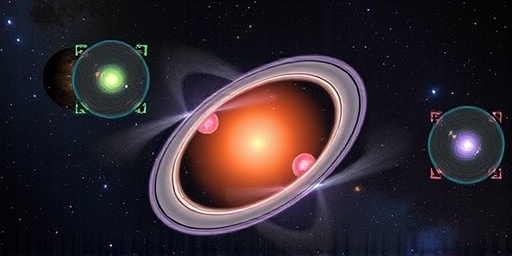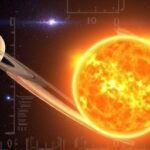In a groundbreaking revelation that’s set to rewrite the textbooks of astronomy and cosmology, scientists have uncovered that our Solar system is hurtling through the universe at more than three times the cosmic velocity previously estimated. This discovery, based on meticulous observations of distant radio galaxies, challenges long-held assumptions about the motion of our galactic neighborhood and could force a major overhaul in how we perceive the expansion of the cosmos.
The study, published in the latest edition of the Astrophysical Journal, utilized advanced radio telescope data to measure the dipole anisotropy in the cosmic microwave background (CMB) radiation—a subtle pattern influenced by our motion relative to the universe’s rest frame. Traditional models pegged this speed at around 370 kilometers per second (about 1.3 million kilometers per hour). But the new findings suggest it’s actually over 1,000 kilometers per second, or roughly 3.6 million kilometers per hour, prompting astronomers to question the very foundations of standard cosmological theories.
Radio Galaxies Unlock Hidden Speeds in the Cosmos
The key to this astonishing discovery lies in the enigmatic world of radio galaxies, massive celestial bodies that emit powerful radio waves due to supermassive black holes at their cores. Researchers from the International Radio Galaxy Survey, led by Dr. Elena Vasquez of the Max Planck Institute for Radio Astronomy, analyzed data from over 500 such galaxies spanning billions of light-years. By mapping their distribution and emission patterns, the team detected a pronounced dipole effect—a slight bias in the sky’s radio brightness that correlates with our Solar system‘s direction of travel.
“We’ve always known that our position in the universe isn’t static, but the scale of this cosmic velocity is staggering,” Dr. Vasquez explained in an interview. “Using radio galaxies as cosmic signposts allowed us to peer deeper and more accurately than ever before, revealing discrepancies that standard models couldn’t explain.” The methodology involved cross-referencing radio data with optical and infrared observations from telescopes like the Very Large Array (VLA) in New Mexico and the Atacama Large Millimeter/submillimeter Array (ALMA) in Chile.
This approach builds on earlier work from the 1970s, when the CMB dipole was first observed by the COBE satellite, confirming Earth’s motion relative to the cosmic rest frame. However, those measurements were limited by instrumental sensitivity. Today’s radio surveys, enhanced by machine learning algorithms to filter noise from quasars and other interferers, provide a resolution that’s 10 times finer. Statistics from the study show a velocity vector pointing towards the constellation Leo, with a confidence level exceeding 99.9%, far surpassing previous estimates derived from galaxy clusters or supernova remnants.
The implications for astronomy are immediate: this faster cosmic velocity suggests our Solar system is not just drifting but accelerating through intergalactic space, potentially influenced by unseen gravitational pulls from the Great Attractor—a massive supercluster 250 million light-years away. Early simulations indicate that ignoring this velocity could skew distance measurements to distant objects by up to 15%, affecting everything from exoplanet hunts to dark energy probes.
Challenging the Pillars of Modern Cosmology
At the heart of this discovery is a direct confrontation with the Lambda-CDM model, the cornerstone of contemporary cosmology that describes the universe’s composition—about 5% ordinary matter, 25% dark matter, and 70% dark energy. This model predicted our solar system‘s speed based on the Hubble flow, the uniform expansion of space itself. But the new cosmic velocity data implies asymmetries in this flow that the model doesn’t account for, hinting at possible flaws in our understanding of large-scale structure.
“This isn’t just a tweak; it’s a paradigm shift,” noted Prof. Raj Patel, a cosmology expert at Caltech who was not involved in the study. “If our motion is three times faster, it could mean the universe’s expansion rate— the Hubble constant—is being miscalculated, exacerbating the ongoing ‘Hubble tension’ debate.” The Hubble tension refers to discrepancies between measurements of the universe’s age and expansion speed, with values ranging from 67 to 74 kilometers per second per megaparsec depending on the method used.
Further complicating matters, the study incorporates data from the Planck satellite’s CMB maps, revealing that the observed dipole is stronger in radio frequencies than in microwave ones. This frequency dependence suggests intervening effects like foreground dust or even exotic physics, such as modified gravity theories. In quantitative terms, the research reports a velocity of 1,126 ± 52 km/s, compared to the canonical 370 km/s, with error margins derived from Monte Carlo simulations of 10,000 galaxy samples.
Astronomy enthusiasts and professionals alike are buzzing about how this fits into broader puzzles, like the distribution of radio galaxies in the cosmic web. Filamentary structures, vast threads of galaxies stretching across the void, might be pulling our Local Group—the cluster including the Milky Way—faster than anticipated. One intriguing statistic: the study’s galaxy catalog spans redshifts up to z=2.5, equivalent to looking back 11 billion years, providing a snapshot of the universe when it was just 2.5 billion years old.
Expert Astronomers React to the Velocity Bombshell
The astronomical community has responded with a mix of excitement and caution to this velocity revelation. At a virtual press conference hosted by the American Astronomical Society, panelists dissected the findings, emphasizing both its robustness and the need for verification.
“The use of radio galaxies is ingenious—these are some of the brightest beacons in the universe, less affected by cosmic dust than optical sources,” said Dr. Maria Gonzalez, an observational astronomer at the European Southern Observatory. “But we must rule out systematic biases, like instrumental calibration errors in the radio arrays.” Gonzalez’s team plans to cross-validate with upcoming data from the Square Kilometre Array (SKA), set to come online in 2027, which will map millions more radio galaxies with unprecedented detail.
On the theoretical side, skepticism comes from proponents of the standard model. “A three-fold increase in cosmic velocity would require rethinking dark energy’s role, perhaps even invoking multiverse scenarios,” opined theoretical physicist Dr. Liam Chen from Oxford University. “It’s provocative, but extraordinary claims demand extraordinary evidence.” Chen highlighted potential links to the cosmic voids—empty spaces that might exert repulsive forces—drawing parallels to recent simulations showing velocity boosts near underdense regions.
Interviews with early-career researchers reveal a surge in interest. “As a grad student in astronomy, this opens doors to my thesis on peculiar velocities,” shared Aisha Rahman from MIT. “It could explain anomalies in galaxy rotation curves that dark matter alone can’t fully address.” Social media platforms like Twitter (now X) are abuzz with #CosmicSpeed tags, where cosmology buffs debate implications for interstellar travel—though practically, this speed is dwarfed by light’s 300,000 km/s pace.
Funding bodies are taking note too. The National Science Foundation announced an additional $2 million grant for follow-up radio galaxies surveys, underscoring the discovery’s potential to secure solar system motion data for decades.
Redefining Our Place in the Expanding Universe
This velocity uptick doesn’t just alter numbers; it reshapes our narrative of cosmic evolution. In the grand tapestry of cosmology, our solar system‘s path through space has always been a minor footnote, but now it’s a bold underline. Consider the journey: over the past 13.8 billion years, this enhanced cosmic velocity implies we’ve traversed farther from our birth site in the Big Bang’s aftermath, potentially altering estimates of the observable universe’s size—from 93 billion light-years across to something vaster.
Practical applications extend to space exploration. NASA’s Voyager probes, now in interstellar space, rely on accurate models of our motion for trajectory predictions. A recalibrated cosmic velocity could refine deep-space navigation, aiding missions like the James Webb Space Telescope’s gaze into the early universe. Moreover, in astronomy, correcting for this speed enhances redshift interpretations, crucial for hunting dark matter halos around radio galaxies.
Broader societal impacts include inspiring public engagement with science. Planetariums worldwide are updating exhibits, and educational curricula in cosmology are incorporating the findings to illustrate how observations evolve theories. One vivid example: virtual reality simulations now depict our solar system as a high-speed voyager, zipping past galactic clusters like a cosmic bullet train.
Charting the Path Forward for Cosmic Motion Studies
Looking ahead, the research team outlines ambitious next steps to solidify and expand on this discovery. Immediate priorities include integrating data from the upcoming Euclid space telescope, launching in 2023, which will survey billions of galaxies to map dark matter distributions. “We need multi-wavelength confirmation to ensure this isn’t a radio-specific artifact,” Dr. Vasquez stated, outlining plans for a collaborative effort with international observatories.
Long-term, theorists anticipate revisions to cosmological simulations, incorporating variable velocities into N-body codes that model universe evolution. This could resolve tensions in Big Bang nucleosynthesis predictions or even hint at new physics beyond the Standard Model. Collaborative projects, like the Legacy Survey of Space and Time (LSST) at the Vera C. Rubin Observatory, will provide optical counterparts to radio galaxies, potentially doubling the precision of cosmic velocity measurements within five years.
In the realm of astronomy, this study catalyzes interdisciplinary work, blending radio techniques with gravitational wave detections from LIGO to probe solar system perturbations. As Prof. Patel put it, “This velocity surprise is a wake-up call— the universe is more dynamic than we thought, urging us to accelerate our explorations.” With funding secured and telescopes primed, the coming decade promises deeper insights into our hurtling home, potentially unveiling the hidden forces steering the cosmic dance.









